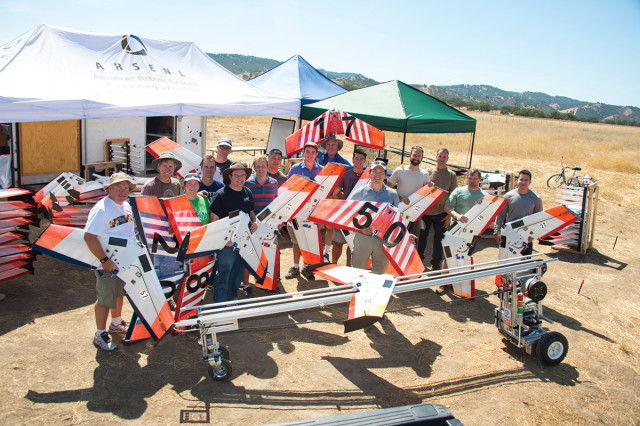A team at the Naval Postgraduate School in Monterey, California, has succeeded in launching 50 drones that were all controlled by a single person. “To our knowledge, this is a world record for the number of UAVs under single operator control, by quite a long way,” says project lead Kevin Jones.
The team aims to develop swarming behaviours that give the benefits of having multiple drones without the need for a large number of operators.
The Zephyr drones they used are custom-made, largely from hobby parts, and cost about $2000 each. Getting so many into the air at once was challenging because they cannot be hand-launched like some smaller drones.
“For larger flying wings the hand-launch process posed a significant risk to the hand launching it,” says Jones.
After experimenting with bungee power, students developed a chain-driven launcher that can fire off the drones in quick succession.
At present, the pre-flight safety checks limit launches to one every 30 seconds, but Jones thinks that they should be able to cut that to 10 seconds or less. He says that they may also build a second launcher, as there is no reason why the swarm has to be launched one at a time.
Swarm signals
Once in the air, the drones communicated with each other via a system that uses high-powered Wi-Fi rather than conventional drone-communication systems, which would be swamped by the overlapping signals. The launch also gave an opportunity to test swarming algorithms with real drones rather than simulations.
“Most of the swarming operations are things like ‘follow-me’ mode, where one or more UAVs follow a leader around the sky,” says Jones. This allows the whole swarm to be moved without directing the aircraft individually. There are also algorithms for search-and-rescue operations, in which the flight pattern resembles that of foraging bees.
“The swarm behaviour looks quite random as the aircraft move around the sky trying to optimally search an area in the shortest amount of time,” says Jones.
Source: New Scientist

